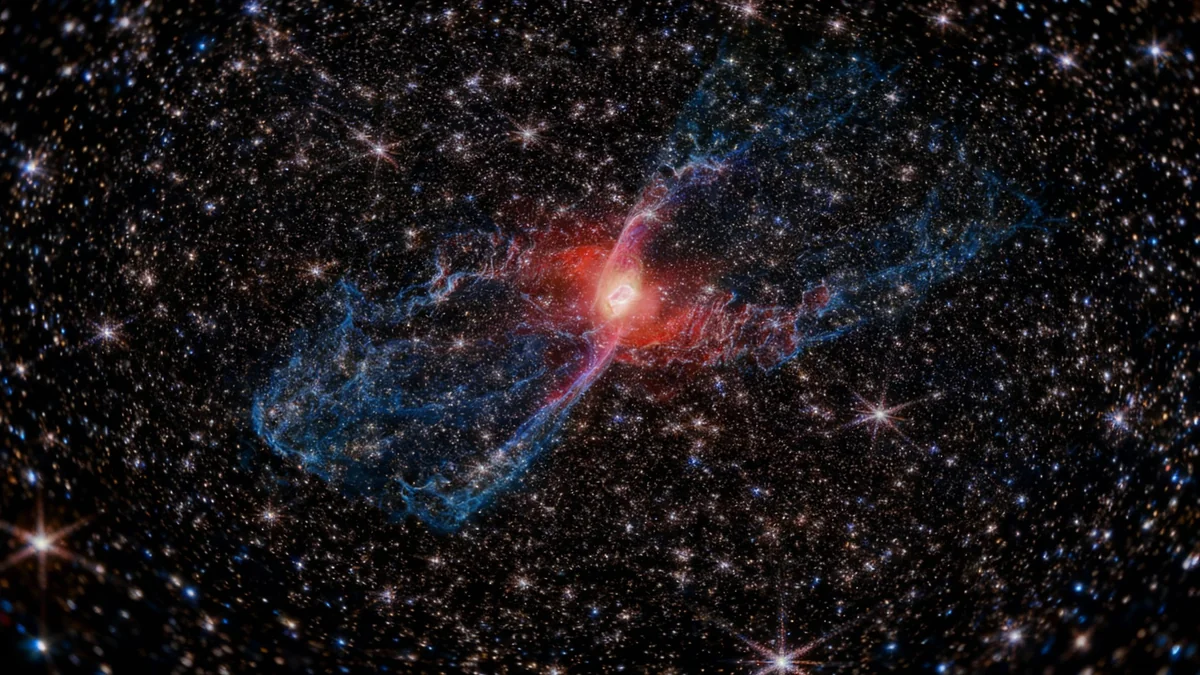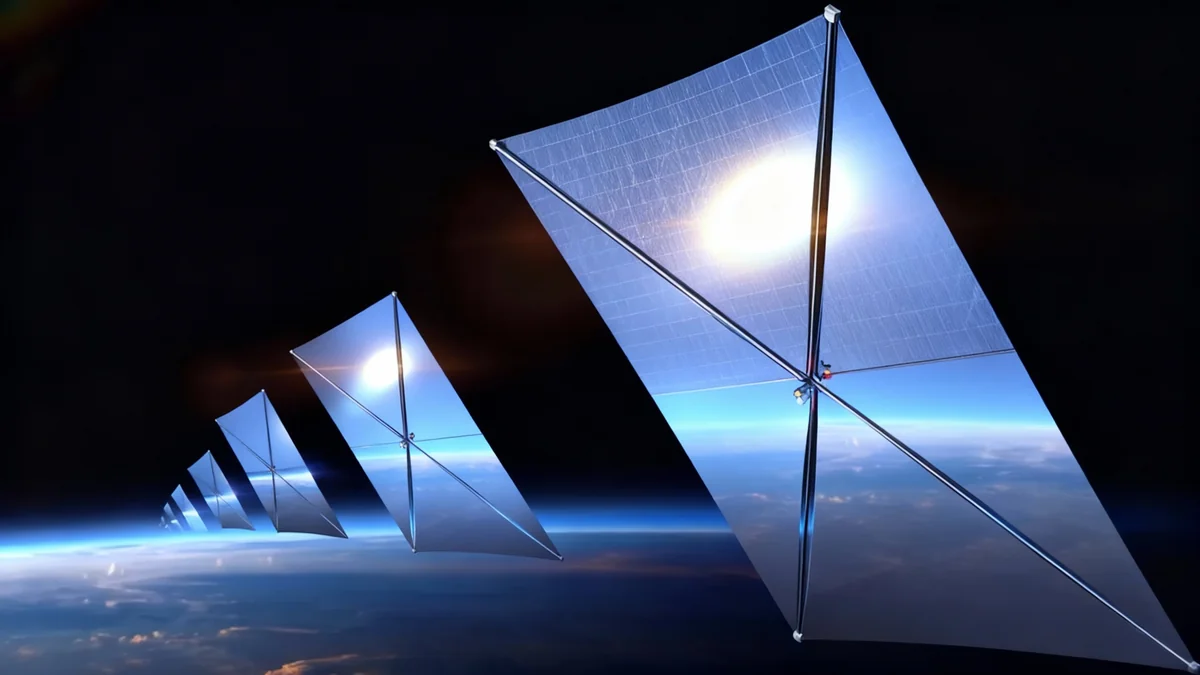A NASA mission scheduled to launch for Mars will carry instruments designed and constructed by university students. The mission, known as ESCAPADE, aims to study the Martian atmosphere and understand how it has changed over time, potentially providing critical data for future human exploration.
The instruments, developed at Embry-Riddle Aeronautical University, are part of a dual-spacecraft mission to investigate the interaction between solar wind and Mars's thin atmosphere. This research will help scientists understand why Mars transformed from a potentially habitable planet with liquid water into the cold, dry world it is today.
Key Takeaways
- Students at Embry-Riddle Aeronautical University designed and built key instruments for NASA's ESCAPADE mission to Mars.
- The mission will use twin satellites to study how solar weather strips away the Martian atmosphere.
- Data from the mission is expected to arrive in 2027 and will help explain Mars's planetary evolution.
- The launch is scheduled for no earlier than November aboard Blue Origin's New Glenn rocket from Cape Canaveral.
A New Generation of Planetary Scientists
The ESCAPADE (Escape and Plasma Acceleration and Dynamics Explorers) mission represents a significant milestone, not just for planetary science but for hands-on student education. The project has provided undergraduate and graduate students with a rare opportunity to contribute directly to an interplanetary mission.
Dr. Aroh Barjatya, a professor at Embry-Riddle and a co-investigator on the mission, highlighted the importance of this experience. His Space and Atmospheric Instrumentation Lab has a history of building instruments for rockets and satellites studying Earth's environment.
"Students working in the Space and Atmospheric Instrumentation Lab have now built dozens of instruments for rockets and satellites to study Earth’s space weather. Launching these instruments to study space weather at another planet accelerates the team’s hands-on learning to a cosmic scale," said Dr. Barjatya.
This initiative moves student-led research from low-Earth orbit to the complexities of deep space, preparing a new generation of engineers and scientists for the challenges of future exploration.
The Student Contribution
The specific instruments developed at the university are a suite of Langmuir probes. These devices are designed to measure the properties of plasma—a state of matter consisting of charged particles—in the Martian atmosphere. Ph.D. candidate Nathan Graves explained that these probes will measure various plasma characteristics.
When combined with data from other instruments on the two spacecraft, the scientific community will gain a comprehensive understanding of the plasma environment surrounding Mars. This information is crucial for modeling atmospheric escape, the process by which a planet loses its atmospheric gases to space.
Personal Touch
As a testament to their involvement, the students etched their names onto one of the circuit boards that will travel millions of miles to Mars. This personal mark will become a permanent part of interplanetary exploration history.
Unlocking the Secrets of Mars's Past
One of the central scientific questions driving the ESCAPADE mission is how Mars lost its once-thicker atmosphere. Evidence suggests the Red Planet once had liquid water on its surface, implying a climate far warmer and wetter than it is today. The loss of its atmosphere is considered a primary reason for this dramatic climate shift.
The mission's twin orbiters, each roughly the size of a refrigerator, will fly in formation around Mars. This dual-spacecraft approach allows for simultaneous measurements from different locations, providing a three-dimensional map of the atmospheric escape processes.
According to Dr. Barjatya, these measurements will "definitively map out" the mechanisms responsible for driving atmospheric loss. Understanding these processes is not only key to piecing together Mars's history but also provides insights into planetary habitability in general.
Why Two Spacecraft?
Using two identical spacecraft allows scientists to distinguish between changes happening over time and changes occurring in different locations. One orbiter can measure the incoming solar wind while the other measures the atmospheric response, providing a clear cause-and-effect picture of how solar storms affect Mars.
Preparing for Deep Space
Adapting the instruments for the harsh environment of deep space was a significant challenge. The Langmuir probes, previously used on sounding rockets and Earth-orbiting CubeSats, had to be modified and rigorously tested to withstand the high levels of radiation they will encounter during the long journey to Mars and while in orbit.
Dr. Barjatya noted this was a "natural progression" from their previous work. The team's experience in building robust instrumentation for near-Earth space weather provided a solid foundation for the interplanetary project.
The Journey to the Red Planet
The ESCAPADE mission is part of NASA's Heliophysics division, which studies the sun and its influence on the solar system. The launch is slated to take place from Cape Canaveral Space Force Station in Florida.
The two spacecraft will be launched aboard Blue Origin's New Glenn rocket. This will be only the second launch for the heavy-lift vehicle, marking a significant flight for the commercial space company.
- Mission Lead: University of California, Berkeley's Space Sciences Laboratory
- Key Partners: Embry-Riddle, Rocket Lab, NASA Goddard, Blue Origin
- Launch Vehicle: Blue Origin New Glenn
- Arrival at Mars: Expected in 2027
Once the spacecraft are launched, the work for the student team is far from over. Ian Holland, a senior in Engineering Physics, is tasked with processing the data transmitted back to Earth. While initial instrument checks will happen shortly after launch, the valuable scientific data from Mars will not begin streaming back until the orbiters arrive at their destination in 2027.
For students like Holland, the project is more than just an academic exercise. He views his work on the ESCAPADE mission "as the beginning of my career in research," a sentiment echoed by university leadership.
Dr. Jeremy Ernst, vice president for research at Embry-Riddle, praised the project, stating, "The cutting-edge contributions of our institution's researchers aboard the ESCAPADE mission clearly demonstrate the high-impact work that Dr. Aroh Barjatya and talented students — the next generation of aerospace leaders — are capable of delivering."





